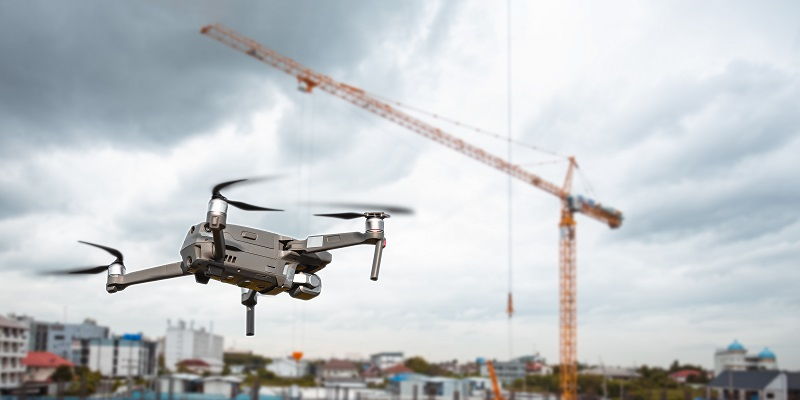Air pollution is a growing concern worldwide, with adverse effects on both the environment and public health. To effectively mitigate these effects, continuous and precise monitoring of air quality is essential. Scientists have recently made a remarkable breakthrough by creating a “lab-on-a-drone” system that can detect and analyze levels of contaminants while floating in midair. This innovative technology holds great promise for improving air pollution monitoring and subsequently reducing its impact on human health.
Limitations of existing measurement equipment
While traditional measurement equipment is capable, it has its limitations. Most equipment is fixed and positioned just a few feet above the ground, making it challenging to capture pollutants that may migrate to different altitudes. This limitation underscores the pressing need for a more flexible monitoring solution that can accurately assess air quality across various heights.
Development of the “Lab-on-a-Drone” Concept
With the objective of creating a low-cost device capable of sampling and analyzing contaminants in the air, researchers focused their efforts on hydrogen sulfide (H2S) gas detection. Hydrogen sulfide is one of the most easily-smelled air pollutants, recognized for its foul, rotten-egg smell. It is particularly dangerous as continued exposure may lead to serious health issues like respiratory problems and even neurological effects.
Designing the drone attachment
To enable the detection of H2S gas in real-time, the research team employed a 3D printer to create a gadget that could be easily attached to the bottom of a quadcopter drone. This attachment was crucial for housing the necessary equipment to perform the required chemical analysis. The team aimed to ensure that the device had the sensitivity and selectivity required for accurate detection.
Selectivity and Accuracy of H2S Detection
The modified quadcopter drone utilizes a unique chemical interaction to selectively react to H2S gas. This selectivity ensures that the detection of H2S gas is unaffected by other interfering gaseous air contaminants. This ability to distinctly identify and analyze the presence of H2S gas sets the “lab-on-a-drone” system apart, providing a reliable solution for real-time monitoring of air quality.
Field test at a wastewater treatment plant
To assess the performance of the “lab-on-a-drone” system, the drone was flown to a wastewater treatment plant known for its production of H2S gas. The drone sampled air at different altitudes, from near ground level to higher elevations. The detecting equipment within the gadget accurately measured the levels of H2S gas present, continuously sending real-time results to a smartphone via Bluetooth. This seamless transmission ensured that the monitoring process was efficient and effective.
Future possibilities and modifications
While the current focus is on H2S gas detection, the technology holds great potential for expansion. The researchers believe that modifications to the device could enable it to identify and analyze different contaminants as well. This adaptability could revolutionize air pollution monitoring, offering a comprehensive approach to addressing various pollutants and their associated health risks.
The development of the “lab-on-a-drone” system represents a significant advancement in the field of air pollution monitoring. By providing continuous and real-time analysis of contaminants in the air, this innovative technology could have a profound impact on public health. By ensuring that pollutants are accurately measured and their sources identified, the system can contribute to effective mitigation strategies and the prevention of serious health ailments associated with air pollution. Continued research and development in this area will undoubtedly drive further improvements, expanding the capabilities of this groundbreaking technology. With the “lab-on-a-drone” system at our disposal, we are one step closer to a cleaner and healthier environment for all.

